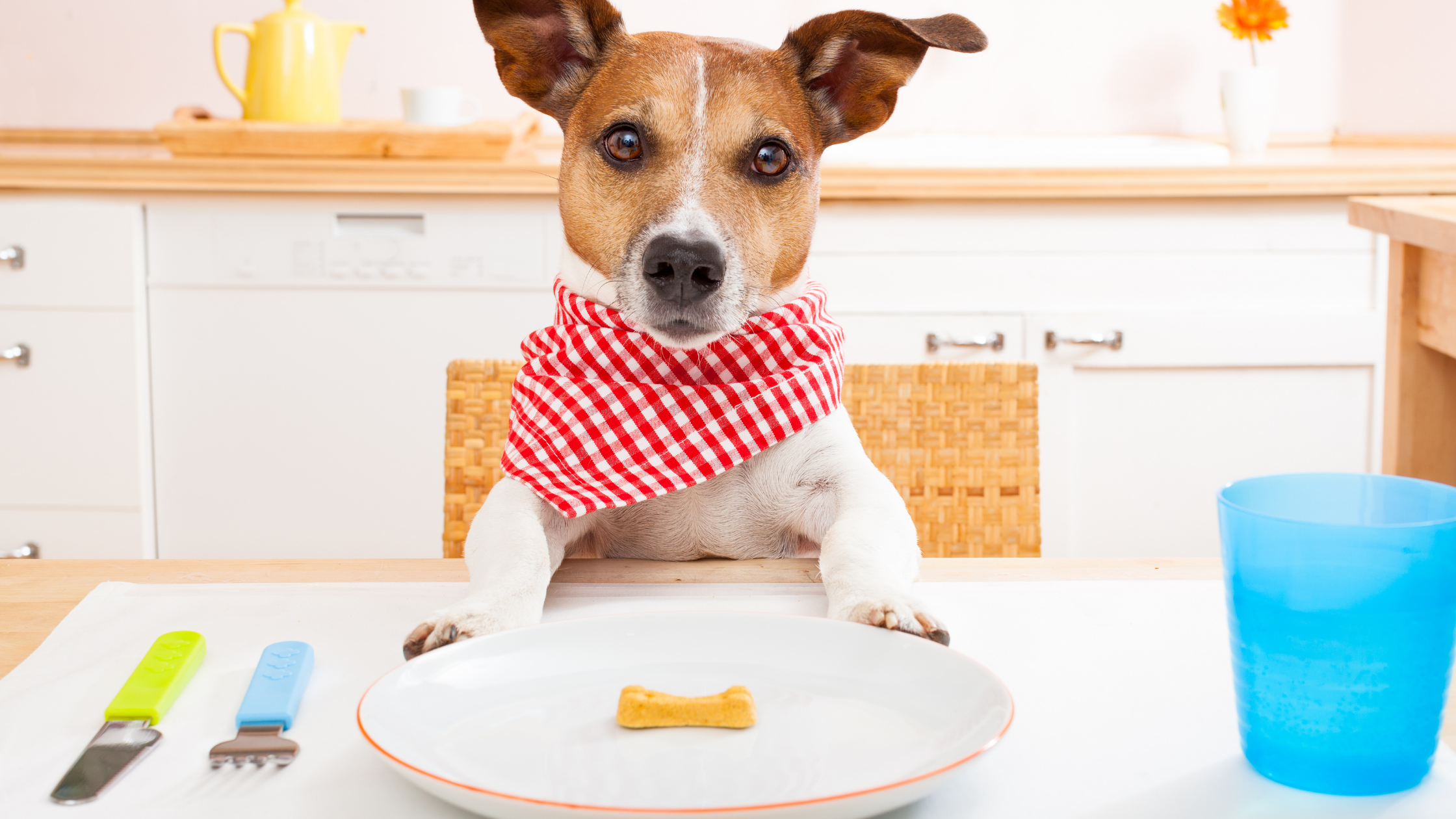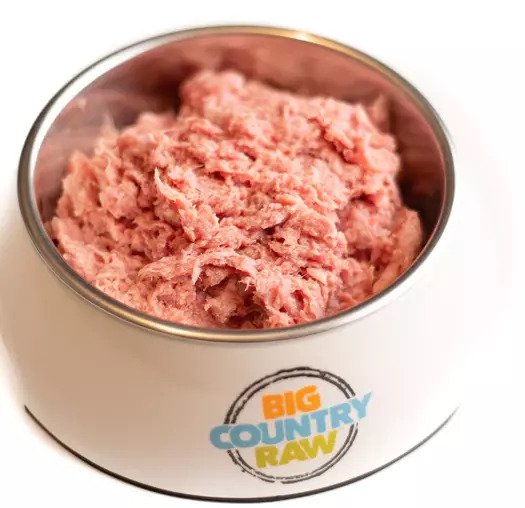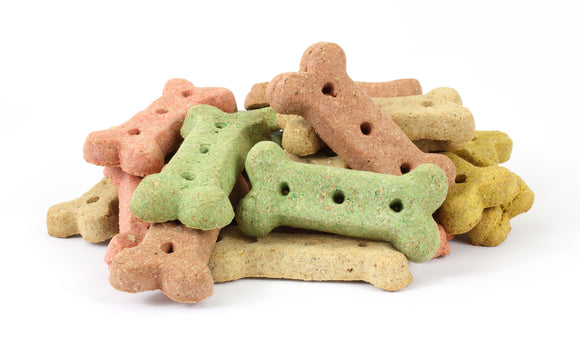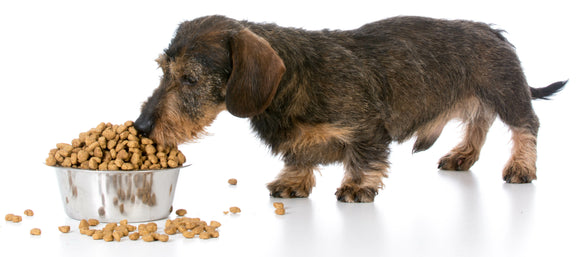
Adult Dog Nutrition 101 - Dog Food & Dog Nutrition (Part 3)
Table of Contents
Adult Dog Nutrition 101

Dogs of different age groups have different nutritional requirements. The dietary needs of adult dogs are different from those of puppies and senior dogs.
But how do you know that your puppy has reached adulthood, and now is the time to make changes to his diet? The answer is not simple, but you can make healthy and safe changes to your dog's food with the right knowledge.
If you want to know your adult dog's nutritional requirements and when your puppy is classified as an adult dog, read this article to the end.
When does a puppy become an adult dog?
According to the Merck Veterinary Manual, a puppy becomes an adult dog when he reaches approximately 90% of his expected body weight.
This is because the diet necessary for adult dogs contains nutrients that only suit the animal when he has passed his growth stage. Most puppies reach their adult body weight within a year, but some large breeds continue to grow for up to 2 years.
Nutritional requirements for adult dogs
When you are thinking about feeding your adult dog, you must bear in mind one thing that your dog needs a complete and balanced diet. You should always check the requirements written on the food bag label and make sure it is stated there that the nutrient requirements are in accordance with the American Association of Food Control Officials (AAFCO).
You must also ensure that the dog food is suitable for the maintenance of the adult life stage. Adult dogs that are pregnant, working, and lactating have different nutritional requirements than puppies and older dogs. A food for adult dogs should have:
- High-quality protein 18% (dry matter basis) for maintenance and 22.5% protein for the growth and reproduction of the adult dog.
- The minimum amount of fat necessary for the maintenance of an adult dog is 5.5%, and for reproduction, it is 8.5%.
- The caloric requirement of dog food is 4000 kcal ME / kg of dry matter.
Is there any difference in the nutritional requirement of dogs according to breed?
Based on research conducted in recent decades, veterinary nutritionists have identified that there is variation in nutrients and metabolism between different breeds.
However, the basic nutritional requirement of all adult dogs is the same; the only difference from one breed to another is that some nutrients are more important for some breeds than others.
Generally, small breed dogs require a high-fat diet compared to large breed dogs due to their rapid metabolism. Another fact is that most large dog breeds tend to suffer from musculoskeletal problems than small dog breeds, so their diet should contain additional supplements for joint health.
So as long as you know your dog's basic nutritional needs, you can find food that fits your dog's needs.
How to Switch Your Dog's Diet?
When your dog has just reached the right age and is ready for a diet change, you should make dietary changes slowly. This is because when you change your dogs' food quickly, they will suffer from stomach problems like vomiting and diarrhea. At some point, if the problems become severe, your pup may refuse food altogether.
If you change their food gradually, they will switch to a new food without any difficulty. When you start to change their food, start with 75 percent puppy food with 25 percent adult dog food. Feed that food for a few days and then change the food ratio to 50-50.
Again, make changes to that food by reducing the puppy food to a quarter, and the remaining portion is adult dog food. As soon as you feel like your dog has entirely accepted the adult food, it's time to eliminate the puppy food once and for all.
Each dog will need a different time to switch to a new diet, but the ideal time to transition to the new food will be no more than 10-14 days.
How often should I feed my adult dog?

Most dogs trick their owners with their adorable eyes to eat more. But the basic requirement of the dog is two meals a day; however, you can give them extra treats occasionally.
The main thing to keep in mind when feeding your dog is not to give him more than the recommended amount. For this, you can calculate the calories to feed your dog.
How do I know whether I am feeding the right amount to my dog?
You can easily check whether you are feeding the correct amount or not based on your dog's body condition. Your dog's body condition can range from obese to emaciated.
If your dog's vertebrae, ribs, and pelvic bones are visible, it means he is emaciated. Initially, those dogs that are fed an unbalanced diet, or malnourished, or suffering from a bacterial or viral infection appear emaciated. Such an adult dog may lack the energy required to nurse and work.
If you feed the correct amount, the dog's body will be in moderate condition; you can easily feel his ribs and see his waist when looking down at the back. An abdominal tuck is also visible when looking from the side.
If your dog is overweight, you will not feel his ribs, waist, or abdominal tuck. There are visible fat deposits at the base of the tail or on the back. Osteoarthritis and diabetes are common problems in obese dogs.
How do I calculate calories and how much to feed my adult dog?

A calorie calculator can be used to calculate the amount of food for your adult dog. In this method, food is calculated based on body weight, activity level, body condition score, and calories per cup of food.
The amount of food can be calculated using RER (resting energy requirement). It can be calculated by formula
RER= 70(Bodyweight in Kg) ¾
Your dog's daily caloric needs can be calculated by multiplying specific RER factors based on life stage. After calculating your dog's caloric needs, read the food bag to see how many calories are in a cup and then feed the cups according to your dog's needs.
Conclusion
Once you have successfully calculated your adult dog's caloric requirement and switched him to adult dog food, it is best not to go back to puppy food. If adult dogs get food according to their nutritional needs, they will feel happy and healthy.
References and Citations:
- https://pets.webmd.com/dogs/ss/slideshow-best-dog-breed-for-your-health
- https://www.aafco.org/Portals/0/SiteContent/Regulatory/Committees/Pet-Food/Reports/Pet_Food_Report_2013_Midyear-Proposed_Revisions_to_AAFCO_Nutrient_Profiles.pdf
- https://douglasfeedandpetsupply.com/blog/60619/is-your-puppy-ready-for-adult-dog-food
- https://www.akc.org/expert-advice/nutrition/how-many-times-a-day-should-a-dog-eat/
- https://vet.osu.edu/vmc/companion/our-services/nutrition-support-service/basic-calorie-calculator



